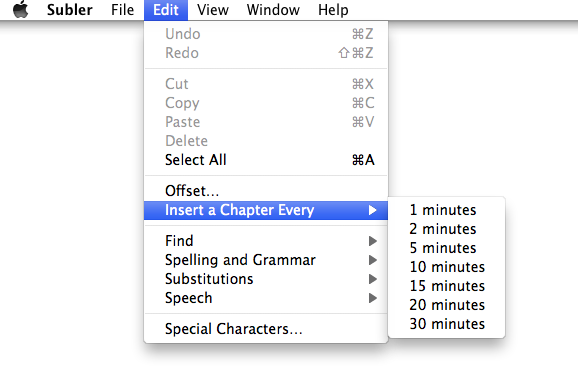

- #Subler chapter equivalent for pcs 1080p#
- #Subler chapter equivalent for pcs drivers#
- #Subler chapter equivalent for pcs Pc#
- #Subler chapter equivalent for pcs tv#
While console played are often played on bigger TV screens, the actual resolution the console renders is pretty low and simply upscaled to fit the screen.
#Subler chapter equivalent for pcs Pc#
If given $1000 to spend on Gaming PC components, I'd rather spend $500 twice, than the $1000 all at once, and get great visuals for much longer.įirst of all, generally PC games are played at higher resolutions. A console is 1 price and delivers a fixed amount of performance, you know what you are getting. That also applies to purchasing/building the hardware, as it's very easy to over-spend on a PC build, and drop the value quotient (performance/price). What the consoles do have is accessibility/ease of use.
#Subler chapter equivalent for pcs 1080p#
To be reasonable, the PC is generally considered a better experience (in terms of technical performance) and so more power is required to drive the larger resolutions and increased visual fidelity).īut even then a $400 upgrade to my PC 14 months ago, has allowed me to play every game in the last year at Very High Settings, at a resolution just shy of 1080p (way more then the consoles), all looking way better then their console equivalents. Specing out that machine would be quite cheap. And honestly, that is playing it quite conservatively.

A PC with a 5year old graphics card generation (Nvidia 8800GT or Radeon 3870) can reasonably simulate the "current gen" console experience. My main reaction is that the OP's comment is inaccurate. But I really don't think it addresses the original concern, that of price.

Inefficient (or rather, not as efficient) general purpose hardware compared to custom designed single use hardware, definitely plays a part. Also, PC game ports are generally very poorly or completely unoptimised in terms of performance, stability and features because of piracy/lack-of-interest/bullshit from game publishers.
#Subler chapter equivalent for pcs drivers#
TLDR because drivers are huge performance bottlenecks and consoles don't have those bottlenecks. The way things currently are, you can be sure that regardless of what setup you choose of graphic cards, motherboard, soundcard and processor, as long as you meet the minimal requirements, you'll be able to run the game.Ĭonsoles usually start more limited in terms of performance, but as new tricks are learned, and the manufacturers unlock new ways for developers to squeeze more performance out of them, games start to become increasingly better until they reach a performance plateau, like they did with current consoles about two years ago. Why don't they do that? Well because the game would only be compatible with very limited amount of computers, they would require specific graphic cards, processors and motherboards. If PC developers had direct access to the performance of PC graphic cards the performance would be immensely better. In the PC, you have a highway with 40 lanes, but everyone has to stop through multiple toll-booths to pass through. In the consoles, you have a highway with 4 lanes, and you can go as fast as it will allow it all the time. The biggest performance bottleneck in performance for the PC market is in the drivers. Or look into the emulation community to see how many weird system quirks they have to recreate (at great computational expense) to get games to run accurately.Īmazing how many people completely miss the mark on this one. Take a look at the leapfrog in graphical detail of a game like Jak 2 over Jak & Daxter to get a sense of how much more you can do when you've had some time to optimise. Programmers learn the machines and can start squeezing out more and more performance. It's the reason why games can look better and better over a console's life cycle without the hardware changing. This includes things like caching chunks of data to be read directly into memory, optimising where on the disk data goes, coding to take advantage of known hardware quirks, and other things that benefit from knowing that every customer will have the same hardware. You left out: Because developers know exactly what hardware they are targeting, they can make extremely specific optimisations and they can learn tricks and techniques for squeezing more performance out of the same machines.


 0 kommentar(er)
0 kommentar(er)
